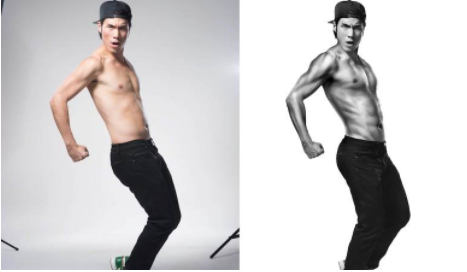By KATRINA HINKER
AP Lang Student
Have you ever thought about the pressure a male high school student faces at the checkout of a grocery store, while images of a perfectly chiseled young male model glares at them from a magazine cover? What about the impact of a social media post of a young male celebrity on vacation in a bathing suit displaying his six-pack abs?

We often think of these challenges as occurrences only in a woman’s world, but social media has leveled the playing field for both sexes. From a young age, boys are influenced by their super hero toys that portray an unachievable muscular figure of little body fat and a lot of muscle. These toys that young men have grown up with are now being portrayed more than ever on the big screen by real life male actors who go to extreme and unhealthy lengths to achieve the unnatural physique of plastic action heroes.
Social media and pop culture both contribute to the pressure faced by men, depicting “perfect” bodies. But what people forget is that figures can easily be edited, photoshopped, and airbrushed to perfection, which everyone then sees, assumes is natural, and tries to mimic to fit in.
Some of my male friends and classmates feel that their own expectations play a role in how they view their bodies.
“Society and media advertise ‘perfection,’ pressuring both men and women to look and act a certain way,” said Alex Hu (Jr.). “I think guys have less pressure than girls, but the pressure is still there. The main character in action movies are usually very muscular, have perfect hair and are very masculine.” said Nick Loveland (Sr.).

“I can’t really say I have any pressure from society to look better, but I do from things like track and field and from my friends, said Jordan Altarac (Jr.) Male athletic students face huge pressure to have the perfect body. “Men in general like to use their strength to assert dominance over other men and to use it to push around those weaker than them. This dominance is exemplified in athletics and how men treat each other.” said Shreyans Desai. There are also students who want a toned, muscular body for their own health benefits and do not do it to attract or dominate others.
In order to accomplish these “goals,” students sometimes turn to dangerous tactics such as the use of steroids or excessive workout regimens. In a study published in the Journal of Pediatrics, more than forty percent of boys in middle and high school said they regularly work out with the goal of increasing muscle mass and thirty-eight percent said they used protein supplements. Nearly six percent said they had experimented with steroids for the purpose of bettering their appearance. Steroids can become addictive, which furthers the negative effect on boys’ bodies.
While our school has its own set of internal pressures placed on the male student population, it is unfortunate that society adds the conditions of being muscular and fit to the list of what is popular, manly and attractive to others. Who actually comes up with these conditions of what is the perfect body and what is manly? The male student population at UNI has so much more than their bodies to offer society. The media needs to stop enforcing the standards of “perfection” on men and women, and should instead represent what others truly care about.













